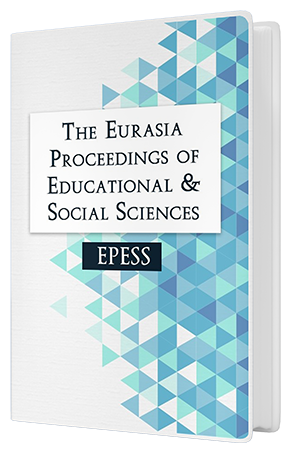Life in Rainbow Colors: Homosexuals Experiences
DOI:
https://doi.org/10.55549/epess.1179706Keywords:
Homosexuality, Quality of life, Coming out, Children of same-sex partners, Gay prideAbstract
The term homosexuality has changed depending on the historical and social context. Although, in the past, significant progress was made in accepting homosexuality, the social exclusion of homosexuals is still not uncommon. Yet, the existence of certain barriers such as homophobic behavior and various forms of violence does not prevent a homosexual person from revealing their homosexual identity. That is why this research aims to examine the experiences of homosexual people regarding the quality of their lives. In this context, research questions were formulated regarding participants’ experience in terms of same-sex preferences, hiding sexual orientation, feelings of exclusion, same-sex relationships and having children, and opinions about Gay Pride. The paper presents the results of research conducted in 2021 using the method of semi-structured interviews on a sample of twelve participants in the Republic of Croatia. The research has found that understanding their homosexuality represents a stressful period of their lives as well as the process of coming out, which they decide on most often during puberty and adolescence. The participants generally did not experience social exclusion, violence, and rejection. They would like to have children, and adoption would be the most likely option. In their opinion, there is no difference between raising children in a homosexual and a heterosexual family. Most of them are satisfied with their lives, and Gay Pride is considered important, especially in terms of increasing the visibility and rights of homosexuals.Downloads
Published
Issue
Section
License
Copyright (c) 2022 The Eurasia Proceedings of Educational and Social Sciences

This work is licensed under a Creative Commons Attribution-NonCommercial-ShareAlike 4.0 International License.
The articles may be used for research, teaching, and private study purposes. Any substantial or systematic reproduction, redistribution, reselling, loan, sub-licensing, systematic supply, or distribution in any form to anyone is expressly forbidden. Authors alone are responsible for the contents of their articles. The journal owns the copyright of the articles. The publisher shall not be liable for any loss, actions, claims, proceedings, demand, or costs or damages whatsoever or howsoever caused arising directly or indirectly in connection with or arising out of the use of the research material. All authors are requested to disclose any actual or potential conflict of interest including any financial, personal or other relationships with other people or organizations regarding the submitted work.




